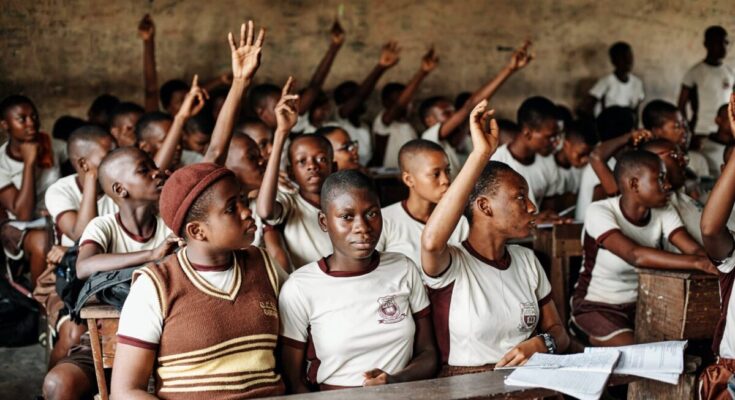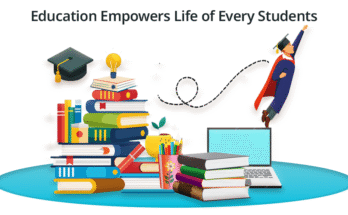Education is one of the most important tools for growth. But in many developing countries, students do not get good quality education. Many children do not go to school, and even those who do may not learn well.
Improving education is the key to ending poverty, growing the economy, and building a better future. In this blog, we will look at the ways to improve the quality of education in developing countries.
Why Education Quality Matters
Good education gives students the skills they need for life. It helps them get jobs, make smart choices, and become responsible citizens. In countries with poor education, people stay in poverty, and the nation cannot grow.
Common Problems in Developing Countries
Before we talk about solutions, we need to understand the problems. Many developing nations face similar challenges in education.
H3: 1. Lack of Trained Teachers
Many schools do not have enough teachers. Some teachers are not trained well. This affects how students learn.
H3: 2. Poor School Infrastructure
In some places, schools have no electricity, toilets, or safe buildings. Students sit on floors or study under trees.
H3: 3. Not Enough Learning Materials
Books, computers, and classroom supplies are missing in many schools. Students cannot learn properly without these tools.
H3: 4. High Dropout Rates
Children often leave school early. Reasons include poverty, child labor, long travel distances, and family needs.
H3: 5. Gender Inequality
In many areas, girls are not allowed to study. Some cultures still believe only boys should get an education.
Solutions to Improve Education Quality
Now let’s look at ways to make education better in developing countries. These ideas can help students learn more and build a stronger future.
1. Train and Support Teachers
Teachers are the heart of any education system. If we want better education, we must invest in better teachers.
H3: What Can Be Done?
- Provide regular training programs
- Give teachers better pay and job security
- Use technology to support teaching
- Offer mentorship and support networks
Example: In Rwanda, teacher training programs helped improve reading levels among young students.
2. Build Better School Infrastructure
A good learning environment is important. Schools should be clean, safe, and comfortable.
H3: What Should Be Added?
- Strong classrooms and roofs
- Clean drinking water and toilets
- Electricity and internet
- Chairs, tables, blackboards, and fans
When students feel safe and healthy, they learn better.
3. Use Technology in Education
Technology can solve many problems. Even in remote areas, tablets, solar-powered devices, and mobile apps can help.
H3: How Can Tech Help?
- Use digital learning apps for math and reading
- Provide video lessons in local languages
- Train teachers through online workshops
- Offer e-books where printed books are hard to find
Example: In Kenya, mobile apps helped rural children improve math and reading skills.
4. Make Education Free and Accessible
Many children cannot go to school because their families are poor. Making school free helps more children learn.
H3: What Governments Can Do
- Remove school fees
- Offer free books and meals
- Give scholarships to poor students
- Provide bicycles or transport for students far from school
5. Focus on Early Childhood Education
Young children learn very fast. Investing in early learning builds strong foundations.
H3: Why It Matters
- Helps children develop basic skills
- Improves brain growth
- Prepares them for primary school
- Reduces dropout rates later
Tip: Set up more preschools and train early childhood educators.
6. Promote Girls’ Education
Girls must be given equal chances to learn. Educating girls improves health, lowers child marriage, and builds stronger families.
H3: How to Support Girls
- Give sanitary supplies and private toilets in schools
- Educate families on the value of girls’ education
- Provide safety measures for girls traveling to school
- Offer scholarships and free uniforms
Example: In Bangladesh, programs for girls raised attendance and delayed early marriages.
7. Update the Curriculum
Many school lessons are old or not useful in real life. The curriculum should be modern and skill-based.
H3: What to Add
- Critical thinking
- Problem-solving
- Digital skills
- Life skills like communication and teamwork
Students should learn not just facts, but how to think and solve problems.
8. Involve Communities and Parents
When parents and communities care about education, students do better.
H3: How to Involve Them
- Hold regular parent-teacher meetings
- Train parents on how to support learning at home
- Create school management groups with local people
- Encourage local donations for school needs
9. Monitor and Improve Quality
Governments must check school performance often. They should track student progress and fix problems quickly.
H3: Tools That Can Help
- National tests and exams
- School inspections
- Feedback from teachers and students
- Using data to improve teaching methods
10. Partner with NGOs and Private Sector
Non-government organizations and companies can help where governments cannot. They can provide funds, training, and learning tools.
H3: Examples
- NGOs setting up mobile classrooms in remote villages
- Tech companies donating computers and software
- Local businesses sponsoring school meals or uniforms
Final Thoughts
Improving education in developing countries takes effort from everyone—governments, teachers, parents, communities, and even students. With the right support, every child can get a quality education.
Education is the best investment for a strong, healthy, and happy nation.
SEO Keywords to Use:
- How to improve education in developing countries
- Quality education in poor countries
- Education challenges in developing nations
- Education solutions for developing countries
- Improving school systems in low-income areas
- Access to education in rural communities
- Education reform in developing nations



